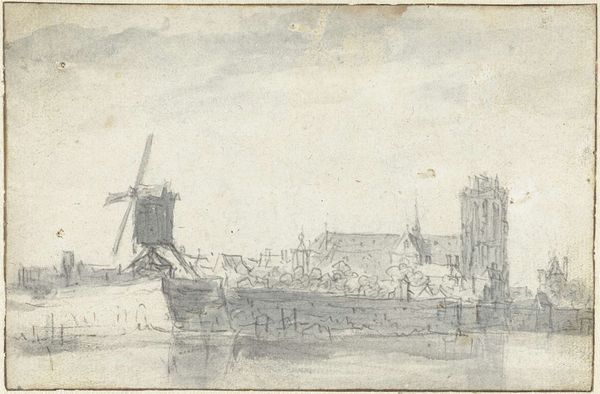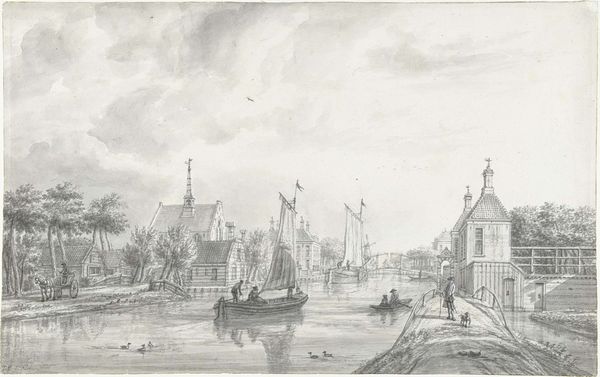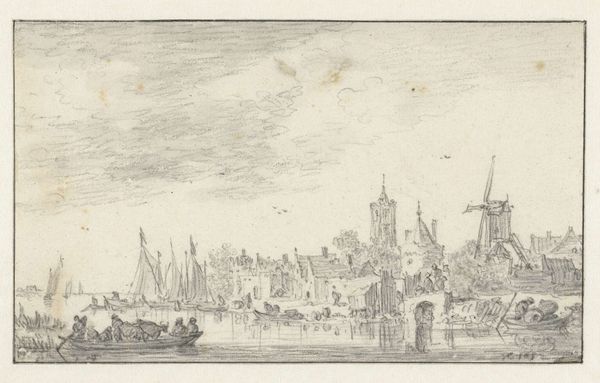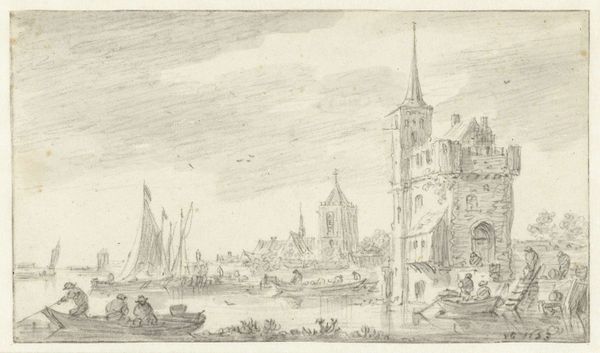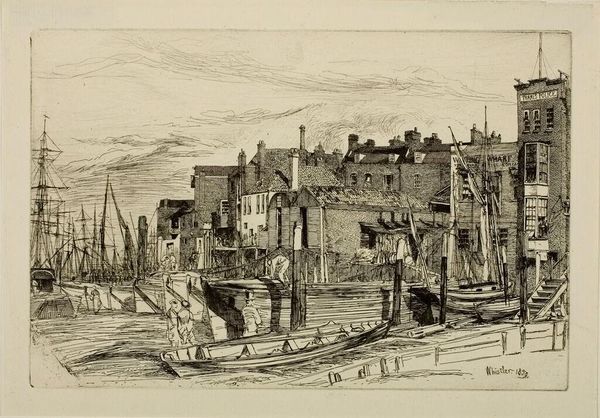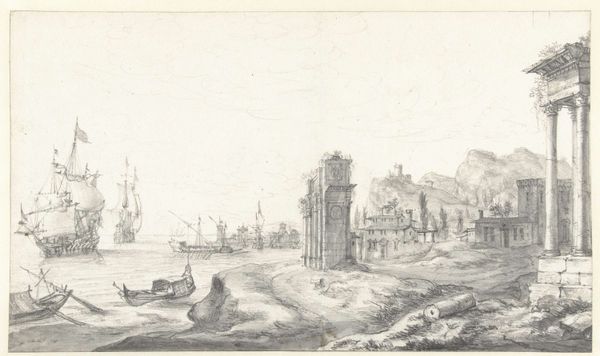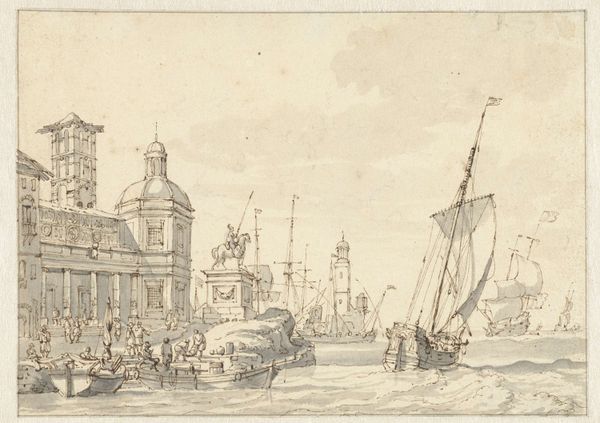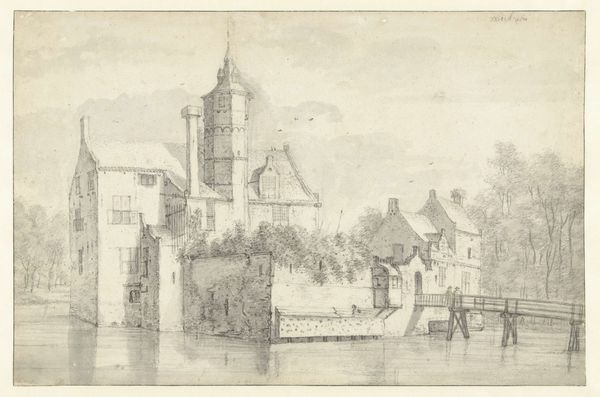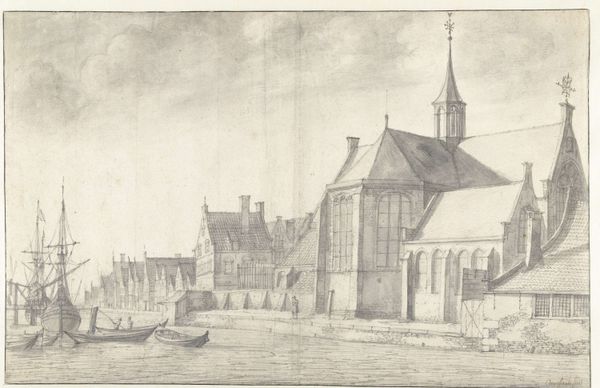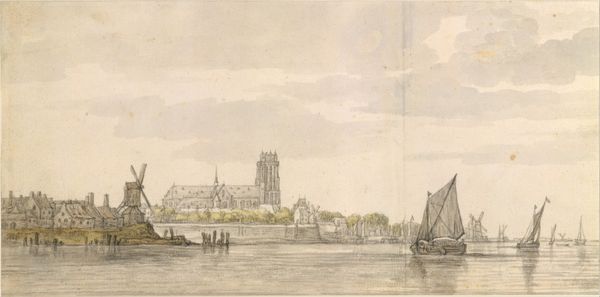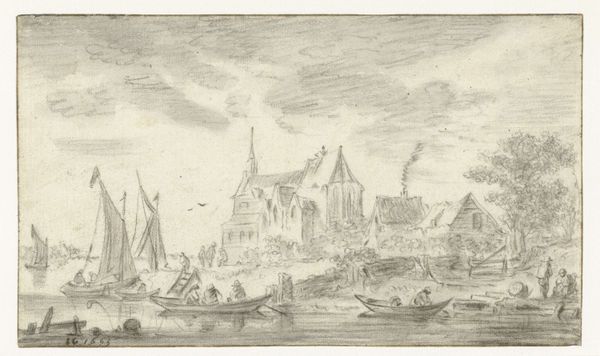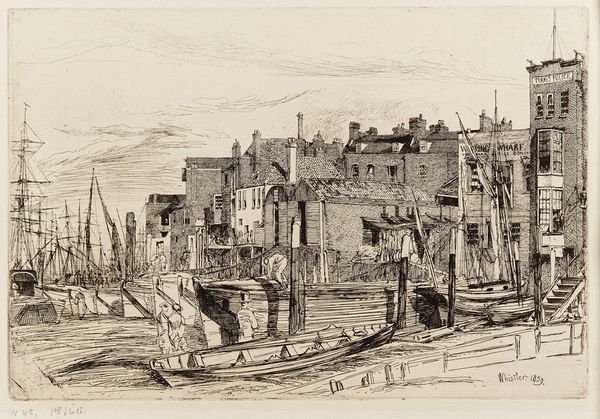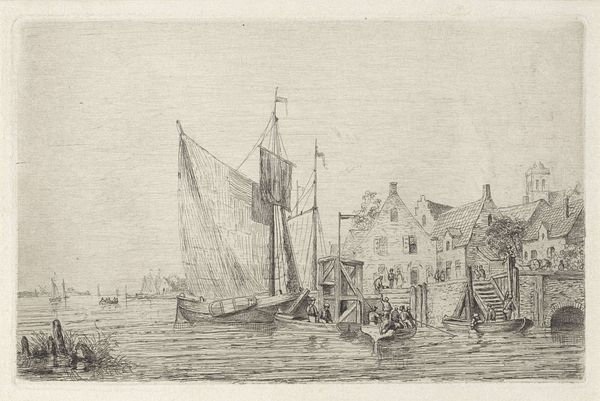
drawing, paper, pencil
#
drawing
#
baroque
#
dutch-golden-age
#
landscape
#
paper
#
pencil
#
cityscape
#
history-painting
#
realism
Dimensions: height 260 mm, width 507 mm
Copyright: Rijks Museum: Open Domain
Editor: This is Jan Abrahamsz. Beerstraten's "Burnt Ruin of the Old Amsterdam City Hall, 1652," a pencil drawing on paper. The grayscale palette gives it a somber, reflective mood, focusing our attention on the architectural details. How do you interpret the stark visual composition of this work? Curator: The ruin itself dominates the visual field, does it not? Note the verticality of the remaining tower against the horizontal stretch of the waterfront. It is rendered with exacting precision in its depiction, focusing purely on structural integrity in decline and contrasting forms. It reminds us that architectural construction, like any element in art, inherently concerns the interplay of line and shape. Do you see how Beerstraten masterfully employs varying pencil pressure to define form and create tonal contrast? Editor: I see that the artist is definitely interested in geometry and forms, and now realize the way in which the reflections of light are rendered in the water enhances the geometry and shapes found throughout the architecture. Do you think this work might symbolize impermanence, like a memento mori? Curator: Symbolism is subjective, but inherent in this form is also a question about how our perceptions give it shape. The ruins possess the abstract visual essence of a constructed reality: one reduced solely to shape. Consider the balance Beerstraten strikes between representation and reduction—how form reveals more than the disaster itself. Is it history or geometry dominating our experience? Editor: That makes me consider how artists working with landscapes and historical depictions must find an interpretive lens with a language that speaks of multiple truths. Curator: Precisely. An act of destruction paradoxically becomes an exercise in construction through form.
Comments
No comments
Be the first to comment and join the conversation on the ultimate creative platform.
